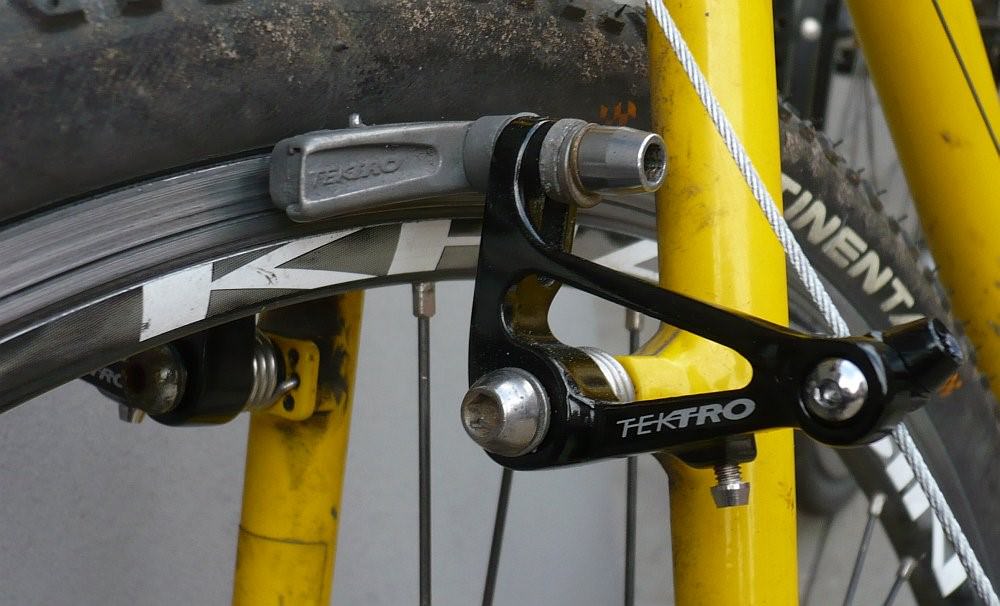Can You Clean Your Bike Chain With WD-40?
If you don’t have any other specialized cleaning products on hand, using WD-40 to clean your chain is an affordable and practical solution. It is a versatile solvent and degreaser, making it effective at removing dirt, grime, and old lubricants from most metals.
Remember that WD-40 is not intended for cleaning bike chains, so it might not be as effective as specific chain cleaners. Nevertheless, it will do the job, and many cyclists have no reservations about using it.
Because the WD-40 fumes can be dangerous if inhaled in large quantities, it’s crucial to clean your chain in a well-ventilated area. Additionally, it might be wise to take precautions to keep overspray away from your bike’s surroundings, including the frame and wheels. Covering them with a cloth or plastic sheet is the simplest way to accomplish this.
Can You Lubricate Your Bike Chain With WD-40?
Although it’s technically possible, it’s not advised to use WD-40 as a bike chain lubricant. WD-40 is a penetrating oil and water displacer, meaning it can remove moisture as well as loosen stuck parts. It lacks the durable lubricating qualities required for a chain that is frequently exposed to outside elements. Chain performance could suffer, and chain wear could be accelerated if you use WD-40 as your main chain lubricant.
After cleaning the chain, it’s preferable to use a specific bike chain lubricant rather than WD-40. Long-lasting lubrication and wear and tear protection are important features of bike-specific lubricants. There are different kinds of these lubricants, like wet and dry, so they can be used in different riding conditions.
WD-40 Vs. Lubricants Made Specifically for Bikes
Although WD-40 is a useful product, it’s not a high-performance lubricant made specifically for bike chains. Bike chain lubes offer improved resistance to dirt and water and are made to protect bicycle chains in both wet and dry conditions.
Wet lube is one type of chain lube that is made specifically for riding in wet conditions. It contains additives that help the lube stay on the chain even when it comes into contact with water. Others, like dry lube, are made to work in dry, dusty environments and leave a thin film on the chain that deters dust and dirt.
Bike-specific lubricants are designed to last longer and offer your bike chain better protection than WD-40. They often contain modern additives that help reduce friction, slow down wear, and lengthen the life of your chain.

How to Use WD-40 to Clean a Bicycle Chain in Steps
- Ensure the drivetrain is easily accessible by placing your bike on a bike stand or turning it upside down. Cover the areas around your bike with a cloth or plastic sheet to protect them from overspray.
- Spray WD-40 liberally onto the chain, making sure to coat all links and rollers. To prevent breathing in fumes, make sure to do this in a well-ventilated area.
- Scrub the chain: Scrub the chain to remove dirt and grime using a chain brush or an old toothbrush. Be sure to reach every nook and cranny. A chain cleaning tool with brushes and rollers can also be used to clean your chain effectively.
- Clean the chain: Using a clean, dry rag, thoroughly wipe the chain to get rid of any loosened dirt or extra WD-40. To get rid of all the dirt and grime, you might have to repeat this step several times.
- Rinse the chain (optional): If you want to get rid of any WD-40 residue that might still be on the chain, give it a good water rinse and let it air dry. Avoid getting water inside the bearings or other delicate parts of your bike.
- Apply a bike-specific lubricant: Apply a chain lubricant, either wet or dry, depending on the riding conditions. To avoid attracting dirt, be sure to wipe off any excess lubricant. Proper lubrication will ensure smooth operation and prolong the life of your chain.
Frequently Asked Questions
Can I apply WD-40 to different bike parts?
Yes, you can use WD-40 to help remove tough rust or loosen stuck parts on areas like derailleurs and shifter pivots. However, use caution, as it can impair braking performance if used on brake pads, rotors, or other braking surfaces. Always keep in mind that when it comes to long-term lubrication, WD-40 is not a replacement for specific bike lubricants.
In the event that I don’t have any bike-specific lubricants, can I use WD-40 on my bike chain?
While you can use WD-40 on your bike chain, it’s not the best solution. Even though it will work for a short time, a lubricant made for bikes will last longer and protect better. It’s preferable to use WD-40 as a temporary solution if you don’t have any suitable chain lubricant on hand and to get a chain lubricant as soon as you can.
How frequently should I lubricate and clean my bike chain?
The type of lubricant you use, as well as your riding conditions, will determine how frequently you should maintain your chain. Generally speaking, you should lubricate and clean your bike chain every 100 to 200 miles or whenever it seems dirty, makes noise, or shifts clumsily. You might need to lubricate and clean your chain more frequently if you ride in muddy or wet conditions.
What are some WD-40 substitutes I could use to clean my bike chain?
There are specialized bike chain cleaners and degreasers on the market that are made for this purpose. Simple Green, Finish Line Citrus Degreaser, and Park Tool Chain Cleaner are a few well-liked alternatives. These products frequently work better and are less likely to impair the performance of your chain over time.
Can I clean my bike chain with household items if I don’t have WD-40 or a bike-specific cleaner?
Yes, a few common items can be used in place of commercial chain cleaners to clean your bike chain. A toothbrush or a hard brush can be used to scrub the chain, and dish soap and water can be an efficient degreaser. However, these techniques might not be as effective as using WD-40 or a specialized chain cleaner.
Does WD-40 harm the chains or other parts of bicycles?
When used properly, WD-40 rarely harms bike chains or other components.
Conclusion
WD-40 can be a useful tool for cleaning your bike chain, but it’s not the best option for long-term lubrication. Use a bike-specific chain lube that is made for the riding conditions you face to keep your bicycle running smoothly and increase the life of your chain. To guarantee a smooth ride and avoid rust and wear on your bike’s moving parts, be sure to clean and lubricate your chain on a regular basis.
Whether you ride frequently or only occasionally, keeping your bike’s chain in good condition is an essential part of bike ownership. For advice on the best chain lubricants and cleaning solutions to keep your bike in top condition for every ride, your neighborhood bike shop should be more than happy to help.

